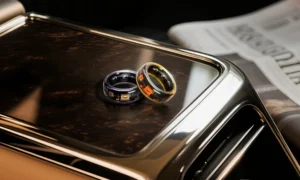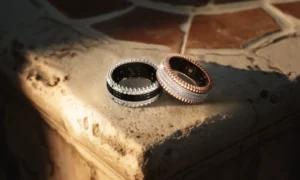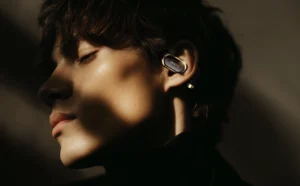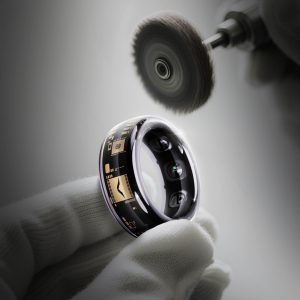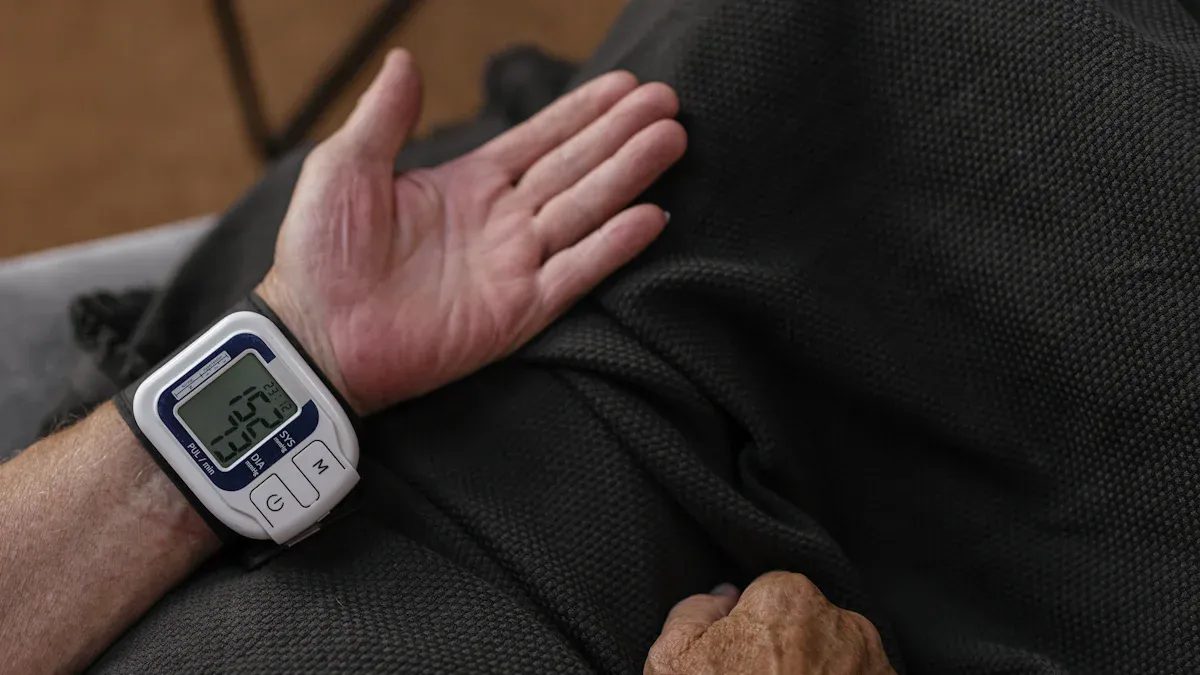
You may ask how wearables track blood pressure without big machines. Old ways, like mercury monitors, are very accurate but can feel awkward and need training. New wearables, like the VERTU GRAND WATCH, use smart sensors such as PPG to monitor blood flow on your wrist. The AI Health Guard technology analyzes this data and provides quick results. Since high blood pressure affects many people, more individuals are seeking wearable blood pressure monitors now.
Key Takeaways
-
Wearable devices like smartwatches use sensors to check blood pressure. They do not need big machines. These devices give fast and easy readings.
-
Cuffless monitors feel better than old cuff-based devices. They let you track blood pressure all day.
-
You must calibrate your wearable often for correct readings. Experts say to calibrate every few weeks or more if needed.
-
Knowing how to wear your device right helps it work better. Make sure it fits tight and sits at heart level.
-
Using wearables to check blood pressure shows patterns over time. This can help you make good health choices and manage hypertension.
How wearables track blood pressure
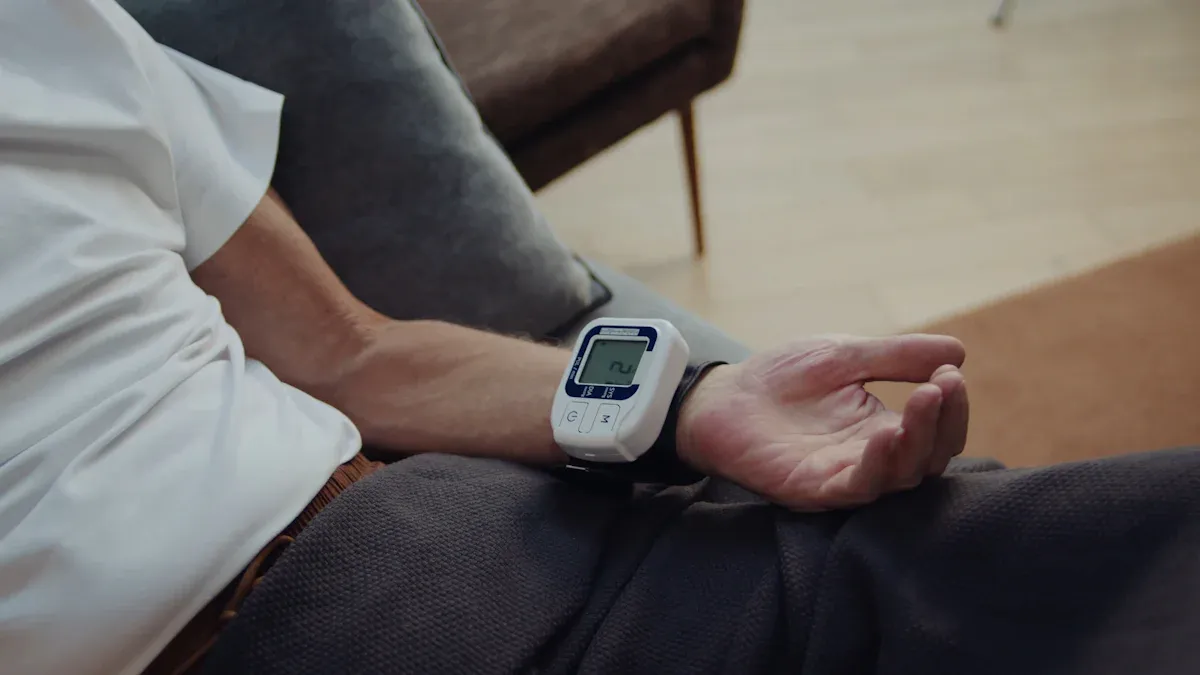
Wearable device technology
You may wonder how smartwatches check blood pressure without big machines. Today’s wearable device technology uses small sensors and smart software to do this. Devices like the VERTU GRAND WATCH look fancy and have health tools. You get a PPG Bio-Tracking Optical Sensor on your wrist. It shines light into your skin and checks how your blood moves. The AI Health Guard looks at this blood pressure data and gives you quick feedback.
Here are some sensors you might see in wearables:
-
PPG (Photoplethysmography) sensors: These use light to spot changes in blood volume. You only need one sensor, and it works on places like your fingertip or earlobe.
-
ECG (Electrocardiogram) sensors: These check your heart’s electrical signals. Some devices use both ECG and PPG for better blood pressure readings.
-
Pulse Transit Time (PTT): This checks how fast the pulse wave moves between two spots in your arteries. When your blood pressure goes up, your arteries get stiffer, and the pulse wave moves faster.
You can find these technologies in smartwatches and fitness trackers from brands like HUAWEI, Omron, and VERTU. They do more than track blood pressure. They also check your heart rate, sleep, and activity. The VERTU GRAND WATCH lets you check your heart rate, blood oxygen, and get health tips, all in one watch.
Tip: If you want to watch your hypertension, a wearable helps you track your numbers all day, not just at the doctor.
Cuffless and cuff-based methods
When you look at blood pressure tracking, you will see two main ways: cuff-based and cuffless devices. Let’s look at the difference.
-
Cuff-based monitors: These use an inflatable cuff, like the ones at the doctor’s office or at home. The cuff squeezes your arm and checks your blood pressure as it fills with air. You get good readings, but you must stop what you’re doing each time.
-
Cuffless devices: These are newer. They use sensors like PPG and ECG to guess your blood pressure without squeezing your arm. You get readings all the time, so you don’t have to stop your day. Cuffless devices feel nicer and let you track your blood pressure while you move.
Here’s a quick comparison:
|
Method |
How It Works |
Pros |
Cons |
|---|---|---|---|
|
Cuff-based |
Inflates cuff, measures pressure |
Accurate, trusted |
Interrupts activity |
|
Cuffless |
Uses sensors, estimates pressure |
Comfortable, continuous |
Needs calibration |
Modern wearables track your blood pressure using cuffless technology. Devices like the VERTU GRAND WATCH, HUAWEI WATCH D, and Fitbit Sense 2 use PPG sensors and smart software to give you real-time blood pressure numbers. Some systems, like Somnotouch-NIBP and ViSi Mobile, use finger PPG sensors with ECG for even better results. These new ideas let you get ambulatory blood pressure monitoring—tracking your numbers as you go about your day.
Pulse transit time is important in cuffless blood pressure tracking. As your blood pressure changes, the speed of the pulse wave in your arteries changes too. Wearables check this speed and use it to guess your blood pressure. The link between pulse transit time and blood pressure helps devices give you helpful data for hypertension.
Smartwatches and fitness trackers now do more than just blood pressure. You can check your heart rate, sleep, and activity. This helps you see patterns and take care of your health.
Measurement process
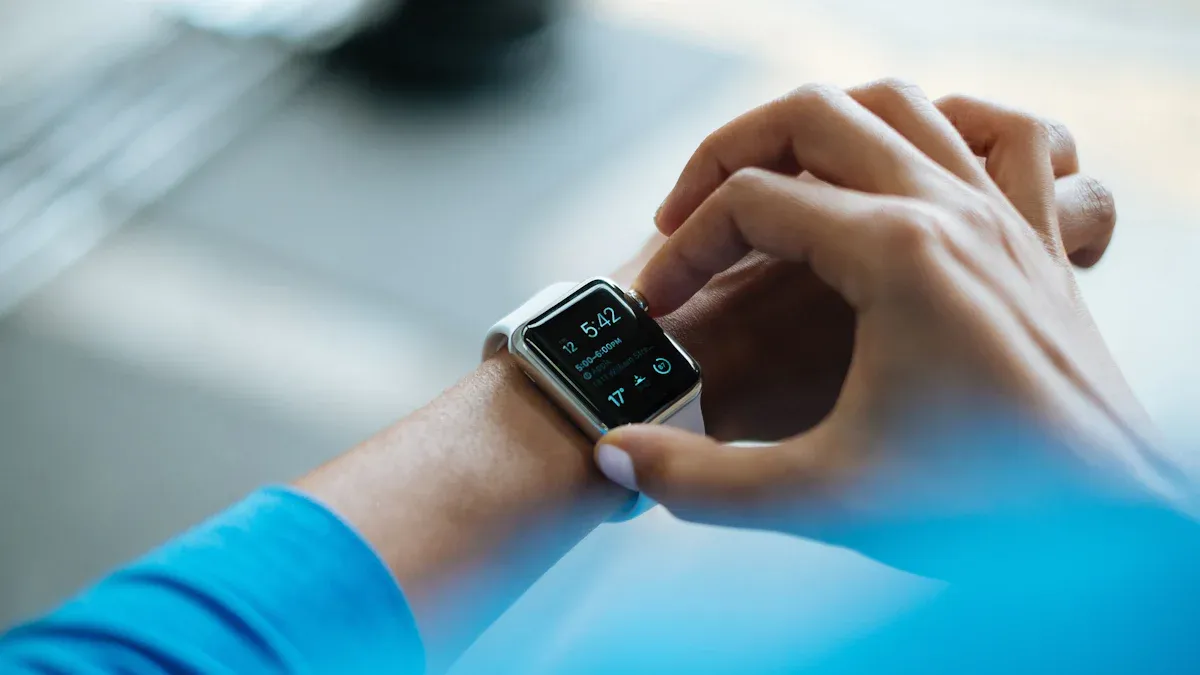
Data collection
When you wear a smartwatch, it starts working right away. The device uses sensors like PPG and ECG to check your body’s signals. PPG shines light into your skin and watches your blood move. ECG looks at your heart’s electrical signals. You can find these sensors in smartwatches, rings, or armbands.
Wearables collect different things for blood pressure readings. They get PPG and ECG signals from your wrist or finger. They count your heart rate and steps every minute. They also track how much you move or sleep. You get summaries for 1-hour, 24-hours, 48-hours, and 72-hours before each reading.
Wearables watch your health all day, not just when you sit still. This is called ambulatory blood pressure monitoring. You see your blood pressure in real life, which helps with hypertension. The VERTU GRAND WATCH uses a PPG Bio-Tracking Optical Sensor to collect these signals and keep you updated.
Tip: If you want to see how your habits affect your blood pressure, a wearable can show you patterns over time.
Data analysis and algorithms
After your wearable collects the data, smart algorithms start working. These algorithms use machine learning to study pulse transit time and other signals. Random Forest is one way to sort and classify the data. The algorithms learn from your readings and get better over time.
Here’s how the analysis works:
-
The device checks pulse transit time to guess blood pressure.
-
Machine learning compares your data to known patterns.
-
AI Health Guard watches for changes and gives you feedback.
-
Continuous monitoring helps spot problems early and sets your baseline.
Cuffless devices use these smart systems to give you quick results. You do not have to wait for a doctor’s visit. Continuous blood pressure monitoring helps you manage health problems and avoid surprises. You get insights that help you make better choices for your health.
Accuracy and limitations
Factors affecting accuracy
You might ask if your wearable gives correct blood pressure numbers. Many things can change how accurate it is. Some problems come from the device. Others happen because of how you use it or where you are.
Here’s a table that lists the main things:
|
Factor Type |
Description |
|---|---|
|
Device- and technical-related |
Problems with hardware, software, or connection can make readings wrong. |
|
User-related |
Wearing the device wrong or making mistakes can change your results. |
|
Data governance-related |
No set rules can make the data quality go up and down. |
How you wear your device is important. If you move a lot, the sensor might slip. It can lose contact with your skin. This can cause motion artifacts. That means the device gets the wrong signals. Here are some things that can cause these errors:
-
The sensor moves on your skin.
-
Your skin changes shape when you move.
-
Blood flow changes when you exercise or get hot.
-
The temperature around you goes up or down.
PPG sensors in many wearables can be sensitive to these changes. Your skin tone and body shape matter too. For example, darker skin or a higher BMI can make it harder for the sensor to work. Where you put the device on your body is important. If you wear it too loose or in the wrong spot, your readings can change each time.
Things like temperature and humidity can also change your results. If it’s very hot or cold, your blood flow changes. The device might not read your blood pressure as well. Even small temperature changes can make a difference.
Tip: For best results, wear your device snug on your wrist. Stay still when you measure. Try to use it in a room that feels comfortable.
Comparison with traditional monitors
You may have used an arm-cuff monitor at the doctor’s office. These check blood pressure at your upper arm, near the brachial artery. This spot gives very good results. Most doctors trust these monitors and call them the gold standard.
Wearables, like smartwatches, check blood pressure at your wrist. This spot is close to the radial artery. Wrist monitors can work well, but they need to be worn just right. If your wrist is not at heart level or you move, your numbers might change.
Here’s a quick look at how they compare:
-
Arm monitors are usually more accurate than wrist monitors.
-
Wrist monitors need careful placement for good results.
-
Doctors say upper arm monitors give the best numbers.
-
Wrist monitors can work well if you use them right and pick a tested device.
Some wearables, like the HeartGuide, use the same way as arm-cuff monitors but are smaller. These have passed lab tests for accuracy. But not all wearables track blood pressure as well as these special ones. Some studies show that some watches can miss the mark for many people. It’s important to pick a device checked by experts.
One big plus of wearables is continuous monitoring. You do not have to stop what you are doing to check your blood pressure. This is called ambulatory blood pressure monitoring. It lets you see how your numbers change during the day. You can spot trends early and make changes before problems start. Young people can benefit because it helps them build healthy habits.
Wearable technology keeps getting better. New devices use AI and machine learning to help accuracy. Companies are making sensors smaller and more reliable. They are also working to make the devices last longer and use less energy. As these changes happen, you can expect even better results from your wearable.
User tips
Best practices
You want your wearable to give you the best blood pressure numbers. Here are some simple tips to help you get accurate results:
-
Start by checking your blood pressure with a home blood pressure monitor. Use this number to set up your wearable for the first time.
-
Calibrate your device often. Some experts say you should do this every 28 days, but others suggest even more often, like every few hours, for the best results.
-
Try not to smoke, drink coffee, or exercise for at least 30 minutes before you take a reading.
-
Go to the bathroom and then sit quietly for five minutes before you check your blood pressure.
-
Make sure your device sits on bare skin and stays at heart level.
-
Sit in a sturdy chair. Keep your arm supported and your feet flat on the floor.
Tip: Regular calibration helps your wearable stay accurate. If you notice strange numbers, try calibrating again.
What to watch out for
Sometimes, your wearable might not give you the right numbers. Watch for these warning signs:
-
You use a cuff that is too big or too small. This can make your blood pressure look lower than it really is.
-
You put the cuff too high on your arm or wrap it too loosely. This can also give you a lower reading.
-
Your arm sits above your heart. Gravity can make your blood pressure look lower.
-
You do not support your arm. If your arm hangs or feels relaxed, your reading may drop.
-
The cuff deflates too quickly. This can make you miss your true blood pressure.
If you see numbers that do not match how you feel, check your device and how you wear it. You can always compare your wearable’s reading with your home blood pressure monitor to make sure everything looks right.
You can use wearables like the VERTU GRAND WATCH to check your blood pressure. These smart devices have sensors and AI that give you fast results. Watching your blood pressure over time helps you see changes. But you should know how correct your device is. Experts say to make sure your monitor is checked by doctors and know what it can and cannot do.
-
Choose one that is simple to use and easy to understand
-
Find features like saving your numbers and connecting to an app
-
Make sure it can find irregular heartbeats
Making smart choices helps you take care of your health and feel sure about it.
FAQ
How often should you check your blood pressure with a wearable?
You can check your blood pressure as often as you like. Many people check it once in the morning and once at night. Some wearables track it all day, so you can see changes over time.
Do you need to calibrate your wearable blood pressure monitor?
Yes, you should calibrate your device. Use a regular arm-cuff monitor to set it up. Calibration helps your wearable stay accurate. Most experts suggest doing this every few weeks.
Can kids use wearable blood pressure monitors?
Most wearables work best for adults. Some devices may not fit smaller wrists or give correct readings for kids. Always check the instructions or ask your doctor before letting a child use one.
What should you do if your readings seem wrong?
If your numbers look strange, check how you wear your device. Make sure it fits snugly and sits at heart level. Try calibrating again. If you still see odd results, compare with a home monitor or talk to your doctor.
Are wearable blood pressure monitors waterproof?
Many wearables are water-resistant, so you can wash your hands or get caught in the rain. Some let you swim or shower with them. Always check your device’s manual for its water rating.

